Photoville Festival 2021 Recommended Reading Part 1: Themes
This year’s Photoville Festival showcased visual narratives that ranged in topics from Asian humanity and the erasure of Indigenous history to a humorous tale about a downy existential hamster living an all too-relatable millennial life.
Themes of reclamation presented in works such as Keeping Love Close: What Does Love Look Like? Asian and Asian-American Photographers Respond and Here Is Where We Shall Stay or ones focused on life turning points such as Goodbye Salad Days: Kevin Faces Adulthood may have piqued your curiosity, leaving you yearning for more.
Well, if you want to dive further into topics raised at this year’s festival, which includes 85+ exhibits dotting public spaces in all five New York City boroughs, we’ve got you covered. We’ve compiled a new, eclectic round of recommended books for 2021.
Exhibitions About Climate Change
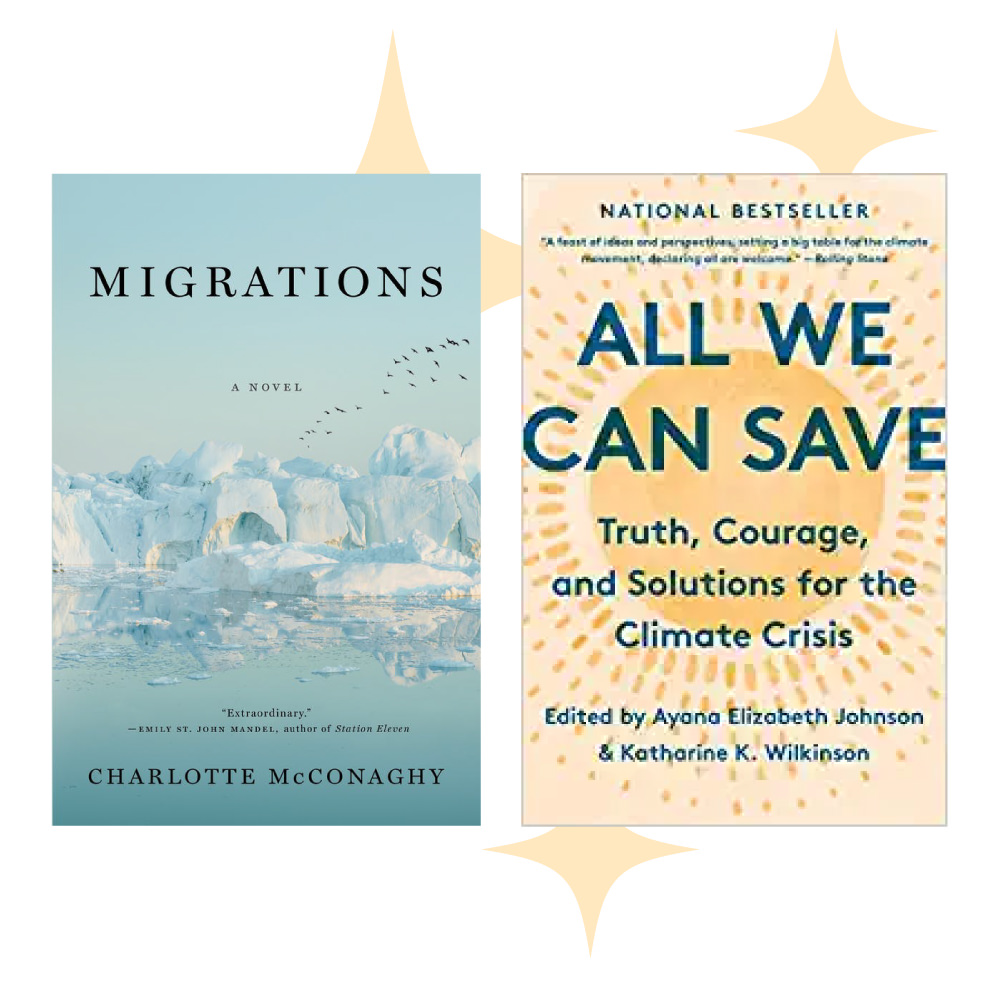
Esther Horvath’s Women of Arctic Science exhibition pays tribute to women in Arctic research; these women share a love for the environment. The fictional Franny Stone in Charlotte McConaghy’s Migrations: A Novel can relate. Packing up just her research gear, Franny goes to Greenland to follow the last Arctic terns in the world on their final migration to Antarctica. If novels aren’t your fare, All We Can Save: Truth, Courage, and Solutions for the Climate Crisis contains more than 50 essays written by women fighting for climate change. Edited by Ayana Elizabeth Johnson and Katharine K. Wilkinson, this volume opens with an assertion about 19th century climate scientist, Eunice Newtown Foote, that hints to readers what’s in store: “Eunice Newton Foote rarely gets the credit she’s due. In 1856 Foote theorized that changes in carbon dioxide in the atmosphere could affect the Earth’s temperature. She was the first woman in climate science, but history overlooked her until just a few years ago.”
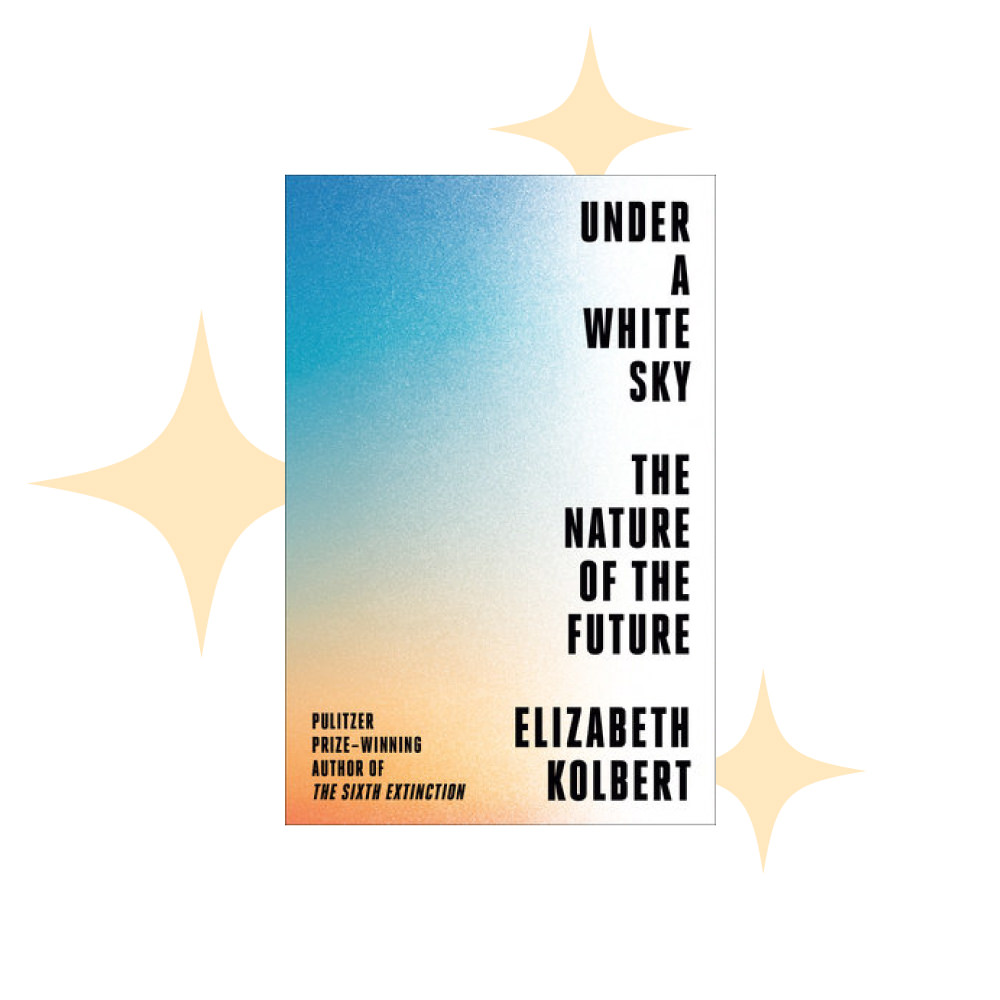
Available here
Isabelle Pateers’ photographic series, Unsettled presented by Dutch Culture USA and NYC Parks focuses on change and the environment at Belgium’s Antwerp harbor expansion zone. This exhibition examines a multitude of factors including connections between identity and our surroundings. Elizabeth Kolbert’s nonfiction, Under A White Sky, takes on a similar exploration, assessing interventions that have put the natural world at risk that, in the end, may be the means that saves us. The Pulitzer Prize-author threads travel, science, and explanatory reportages for an intriguing book. Kolbert meets Australian researchers attempting to develop a “super coral” that can survive global warming, engineers turning carbon emissions to stone in Iceland, and physicists considering shooting diamonds into the stratosphere to cool the earth.
Exhibitions About Identity
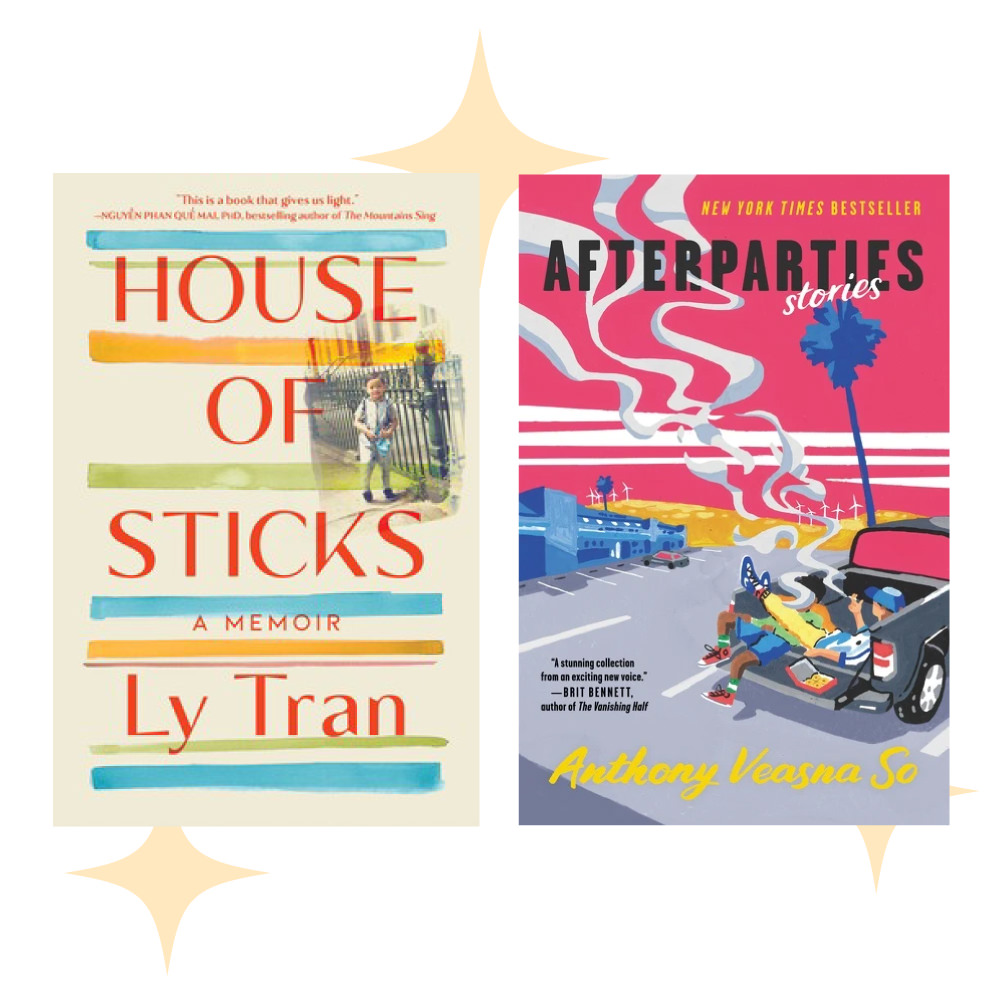
In Keeping Love Close: What Does Love Look Like? Asian and Asian-American Photographers Respond presented by The New York Times, 28 Asian and Asian-American photographers capture the ways love takes shape in their lives. Be sure to read author Celeste Ng’s essay, which accompanies this series first published in the New York Times. Then reach for Ly Tran’s House of Sticks. In this moving memoir, Tran recounts her family’s 1993 resettlement from Vietnam to a two-bedroom railroad apartment in Queens, New York. She’s a devoted, loving daughter who works long hours at home and as a manicurist at a Brooklyn nail salon that her parents eventually take over. There’s also pressure to blend in at school. Anthony Veasna So’s posthumous Afterparties, described as unsparing, comic, and immersive, is a collection about Cambodian-American life in California. “A nine-year-old child learns that his mother survived a racist school shooter. A queer love affair sparks between an older tech entrepreneur trying to launch a “safe space app” and a disillusioned young teacher obsessed with Moby-Dick.”
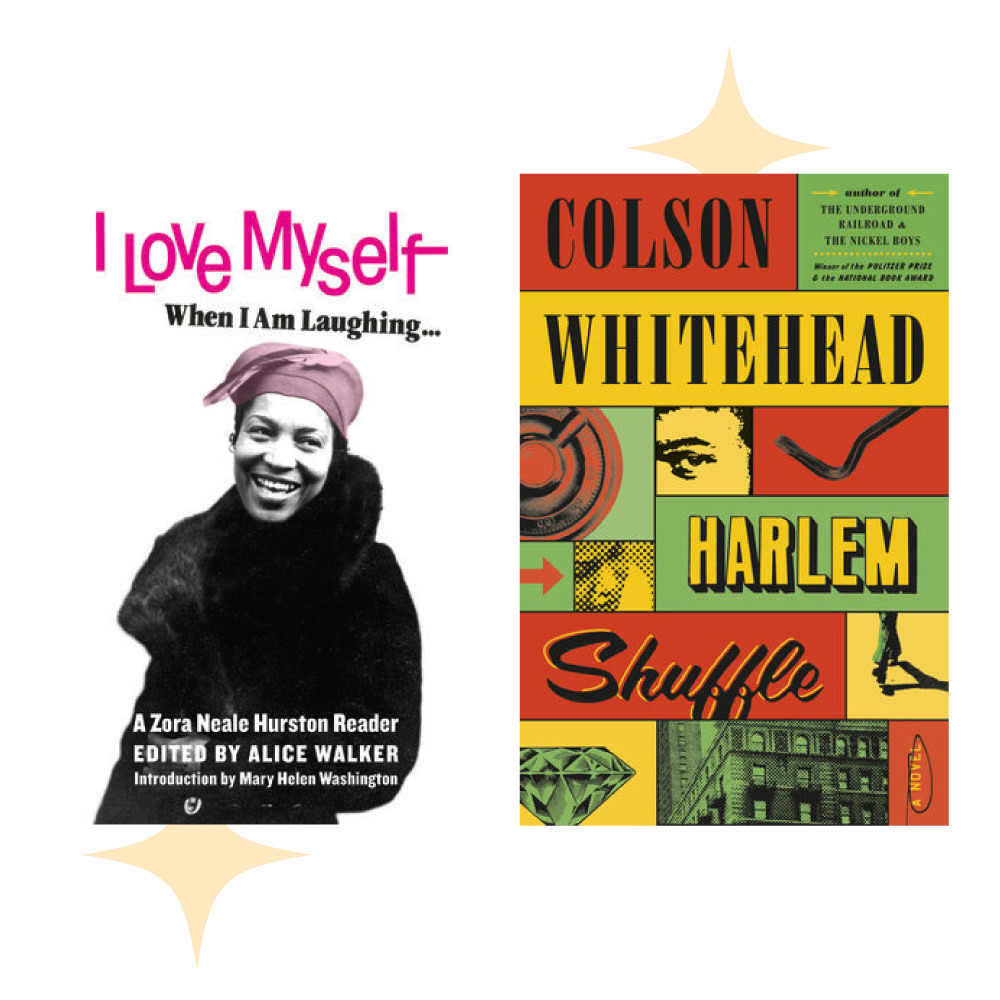
The Schomburg Center’s Been Seen places in conversation works by six modern photographers exploring identity, Black experiences, visual culture, and portraiture with that of Harlem-based studio photographer Austin Hansen (1910-1996). That this exhibition shows Black life through the gaze of Black photographers evokes writings by Harlem Renaissance author Zora Neale Hurston. She deftly wove rich dialogue into her stories about Black life. I Love Myself When I am Laughing…And When I Look Mean And Impressive: A Zora Neale Hurston Reader includes field notes, early essays, and articles such as “What White Publishers Won’t Print.” Writes Hurston in the piece published in 1950, “I have been amazed by the Anglo-Saxons lack of curiosity about the internal lives and emotions of the Negroes, and for that matter, any non-Anglo-Saxon peoples within our borders, above the class of the unskilled labor.”
Awarded the Pulitzer Prize twice, author Colson Whitehead’s newest book, Harlem Shuffle: A Novel, is an ode to Harlem. Time travel to the 1960s and read a tale about a family saga in the guise of a crime novel.
Exhibitions that Reclaimed History
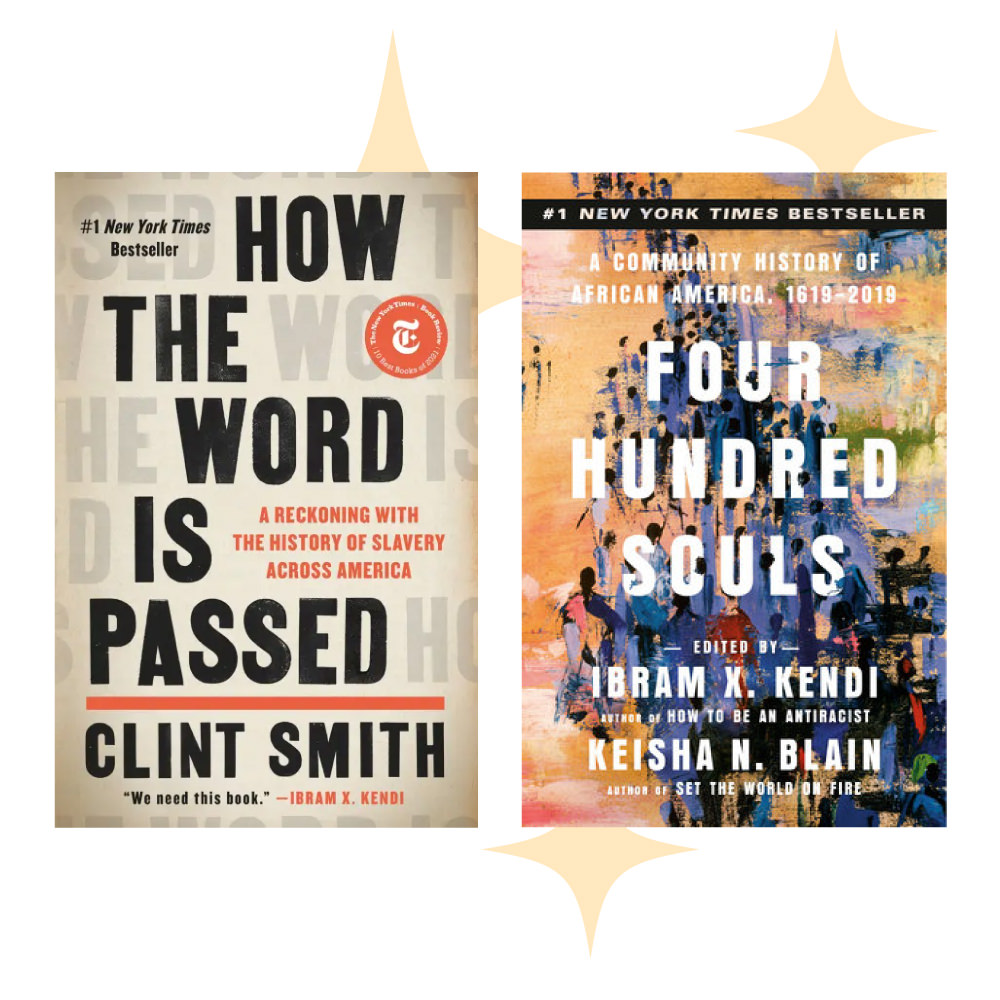
Reclaiming History presented by National Geographic is a photography exhibition that turns its lens on Confederate monuments — symbols of America’s racist past — erected after the Civil War. This series — featuring photographs by Kris Graves — examines the removal of racist memorials and the calls for recognition that ensued following protests last year that swept the U.S and the world. Reading poet, educator, and Atlantic writer, Clint Smith’s How the Word Has Been Passed: A Reckoning with the History of Slavery Across America, is ideal. This book transports the reader through the U.S. landscape, making stops in Louisiana, Virginia, and New York to survey monuments and landmarks that speak to a racist history openly present in quaint town squares and prison camps shrouded from society. Four Hundred Souls: A Community History of African America, 1619-2019 is an epic volume containing “historical essays, short stories, personal vignettes, and fiery polemic” by 90 Black writers, scholars, and journalists. Their works — edited by Ibram X. Kendi and Keisha N. Blain — span 400 years of the African American journey.
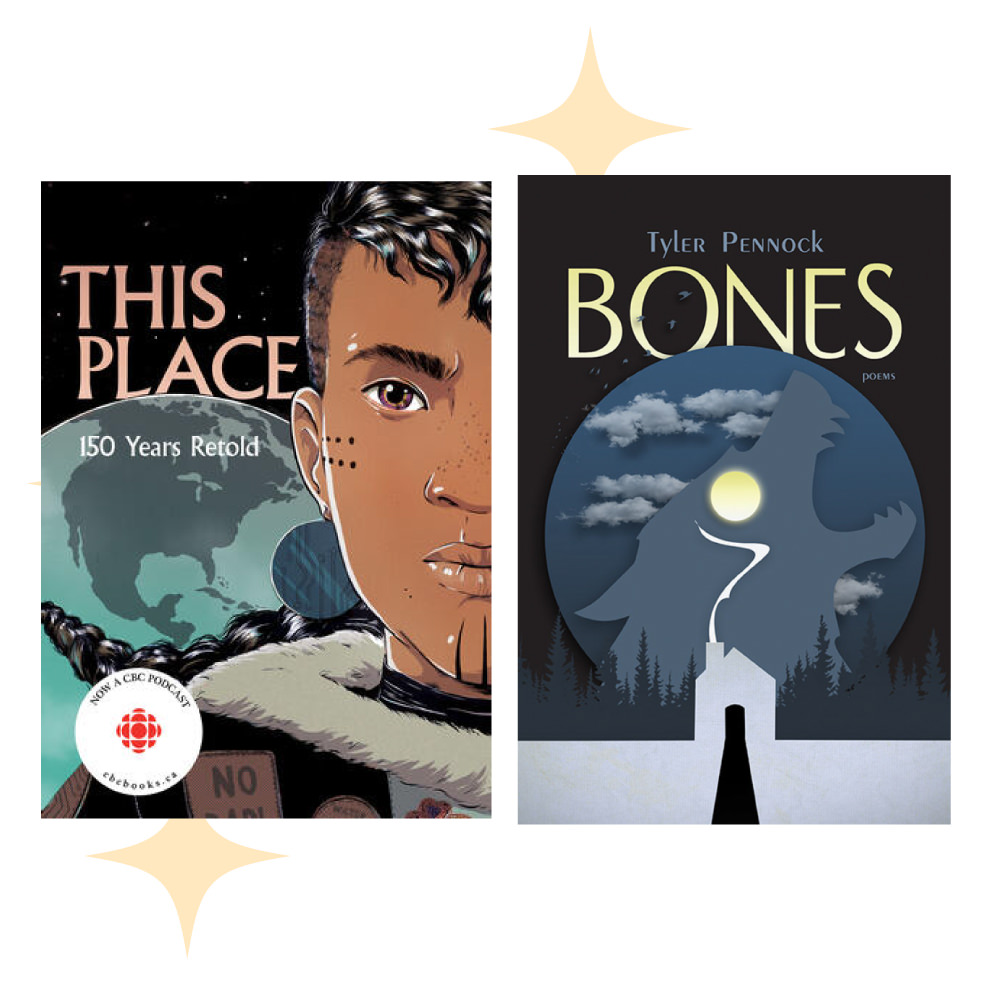
In Here is Where We Shall Stay presented by Indigenous Photograph, Lecia Camera USA, and Photoville, Indigenous people in the Northwest Territories of Northern Canada are reconstructing a history of racism and forced assimilation afflicted by European settlers. Photographer Pat Kane says,”The act of reclaiming culture and identity is ongoing, and my friends here are resilient in a place where symbols and systems of colonization loom large.” This Place: 150 Years Retold by Kateri Akiwenzie-Damm, Sonny Assu, et al., is a groundbreaking graphic novel anthology. Each story told by Indigenous creators includes a timeline. There are also 12 lesson plans for educators. Bones, a collection of poems, is Tyler Pennock’s debut about a young two-spirit Indigenous man dealing with trauma and abuse but also an inspiring voyage of self-reckoning and reclamation.
Exhibitions Centering the QTBIPOC Community
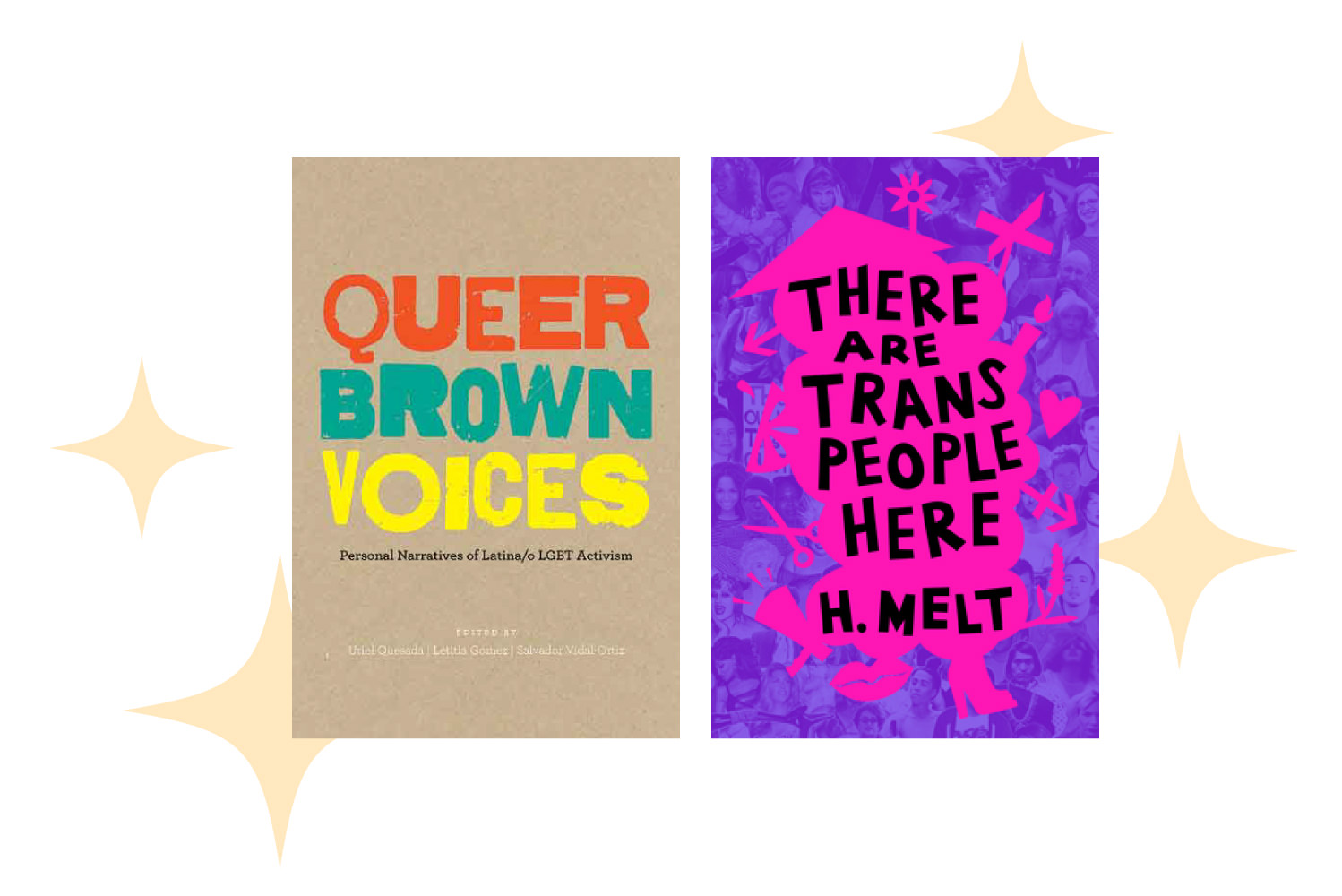
TransLatinx Resilience against COVID-19 presented by Queens Musuem, Photoville, and Colectivo Intercultural TRANSgrediendo is a visual reportage of the pandemic’s effect on transgender and gender nonconforming Latinx immigrants in Queens, NY. Joana Toro has captured images of this community since last year’s passing of TransLatina activist and icon Lorena Borjas, who died of COVID-19-related illness. Queer Brown Voices edited by Uriel Quesada, Lettita Gomez, and Salvador Vidal-Ortiz contains essays chronicling the experience of 14 Latina/o LGBT activists in cities including Adela Vázquez’s “Finding a Home in Transgender Activism in San Francisco.” H. Melt’s newly released poetry collection, There Are Trans People Here, foregrounds moments of resistance in queer and trans history and honors trans ancestors, contemporary activists, artists, and writers fighting for trans liberation.
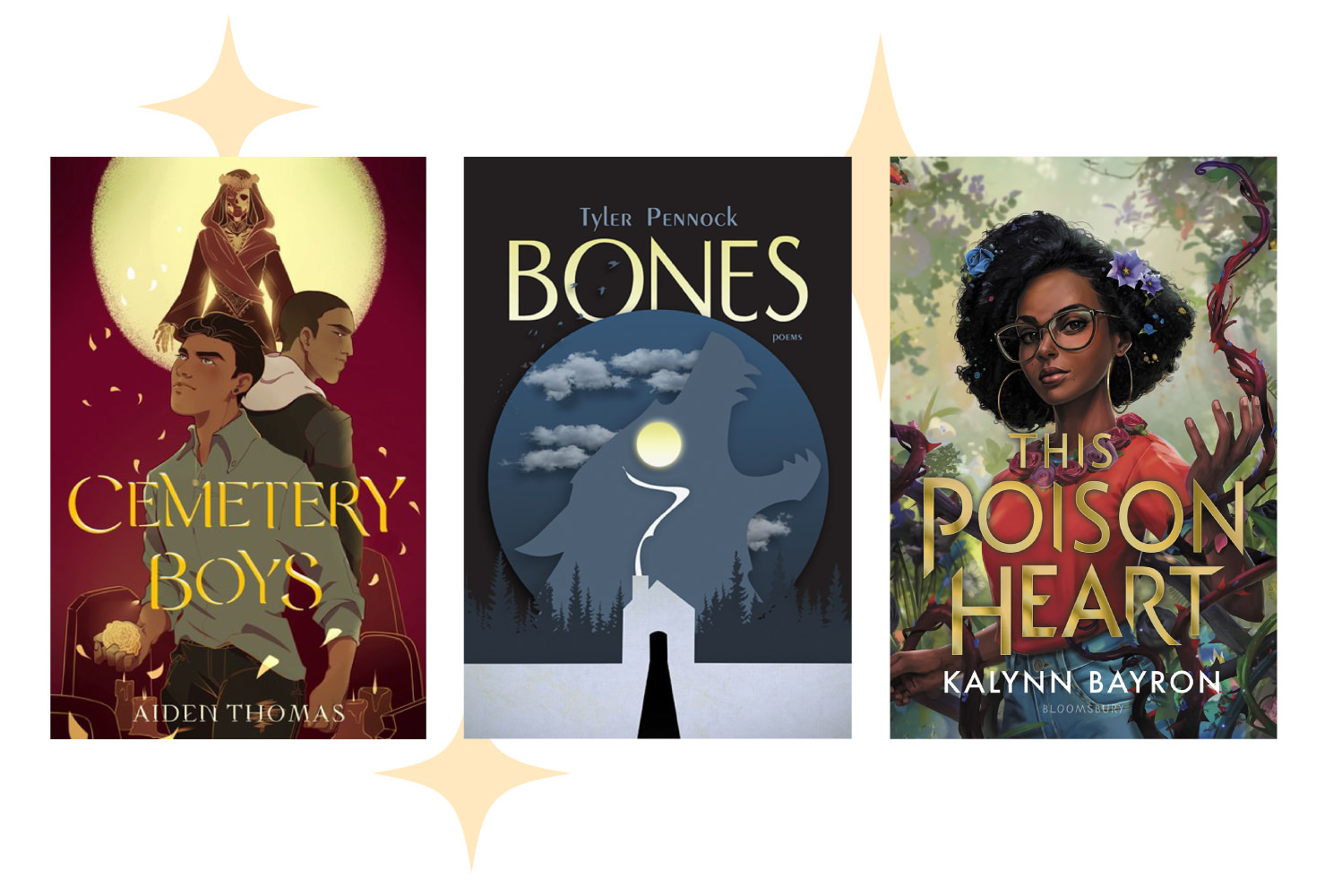
The Lion’s Tooth Project’s Legacy, a photo exhibit centering the role of QTBIPOC young people as storytellers and story keepers, brings to mind Aiden Thomas’ YA fiction, Cemetery Boys, whose trans protagonist is on a quest to prove his gender and brujo status while mistakenly summoning an irksome ghost along the way. This layer and fun novel is about a myriad of things including acceptance, ancestry, and community. In Jonny Garza Villa’s Fifteen Hundred Miles From the Sun, high schooler Julián Luna wants to leave Corpus Christi, Texas, get into UCLA, and live an authentic life as a gay teen. But an impulsive tweet upends his quiet world. For some contemporary fantasy, try the Poison Heart (This Poison Heart No. 1) by Kalynn Bayron, which introduces Briseis, a queer teen from Brooklyn who is the daughter of two doting moms. Briseis also possesses magic. She can grow plants with a single touch, reviving even dead ones. The book is about ancestral bonds, family, and magic.
Kids Corner, Well, Mostly
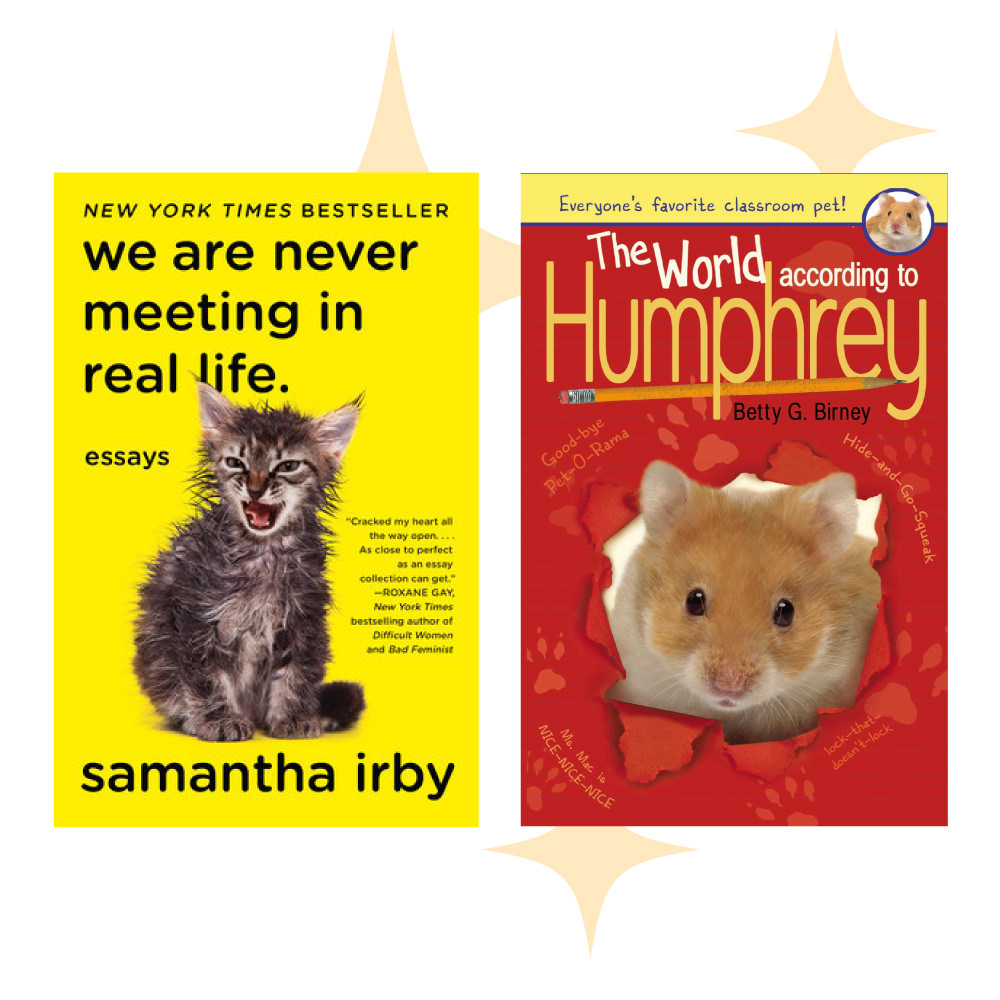
Here’s where we segue to children’s books. But, first, if you’re an adult for whom Goodbye Salad Days: Kevin Faces Adulthood resonated, grab Samantha Irby’s, We Are Never Meeting In Real Life. Irby’s honest musings about growing older, relationships, and jobs are poignant, sharp, and hilarious. Delightfully apt for kids, The World According to Humprey. Humprey, a hamster, learns life lessons about relationships from his student friends in Room 26. This book targets young readers, ages 8-11.
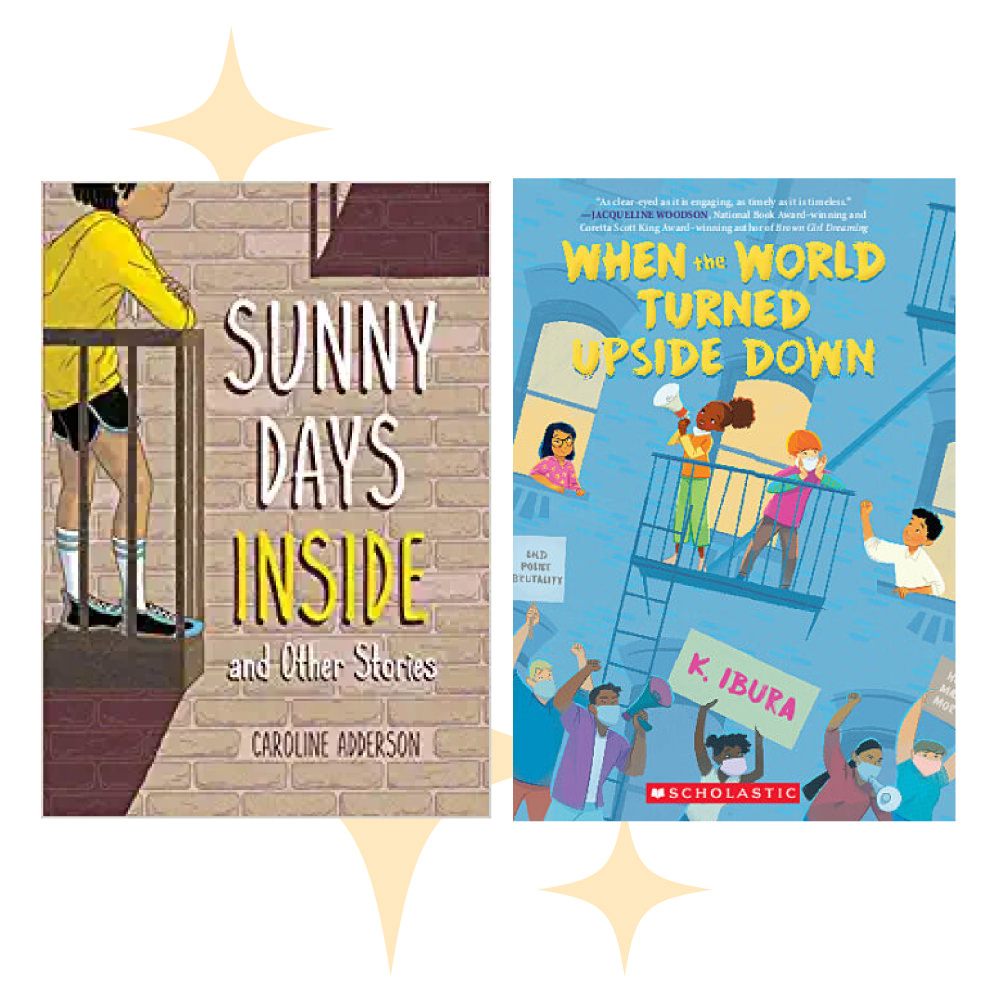
Authors Caroline Adderson’s Sunny Days Inside and K. Ibura’s forthcoming,When the World Turned Upside Down, are fictions about kids living in apartment buildings who must cope with the pandemic. Read these after (or before) you learn about the Photoville exhibition, Stoop Stories: City Kids, a storytelling project that unfolds on stoops and also documents feelings about the pandemic.
Post a Comment
You must be logged in to post a comment.


